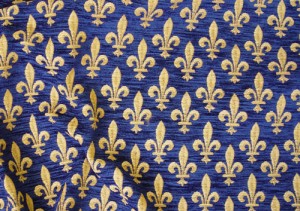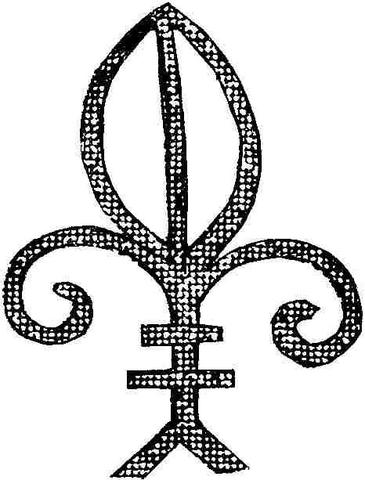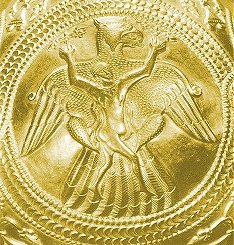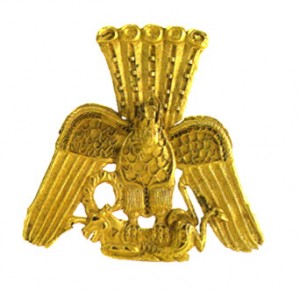The Interpretation of Symbols
 The scholar of symbols is often accused of “reading meanings” into the verbal or visual emblems of which he proposes an exegesis. On the other hand, the aesthetician and art historian, himself preoccupied with stylistic peculiarities rather than with iconographic necessities, generally avoids the problem altogether; in some cases perhaps, because an iconographic analysis would exceed his capacities. We conceive, however, that the most significant element in a given work of art is precisely that aspect of it which may, and often does, persist unchanged throughout millennia and in widely separated areas; and the least significant, those accidental variations of style by which we are enabled to date a given work or even in some cases to attribute it to an individual artist. No explanation of a work of art can be called complete which does not account for its composition or constitution, which we may call its “constant” as distinguished from its “variable.” In other words, no “art history” can be considered complete which merely regards the decorative usage and values as a motif, and ignores the raison d’etre of its component parts, and the logic of their relationship in the composition. It is begging the question to attribute the precise and minute particulars of a traditional iconography merely to the operation of an “aesthetic instinct”; we have still to explain why the formal cause has been imagined as it was, and for this we cannot supply the answer until we have understood the final cause in response to which the formal image arose in a given mentality.
The scholar of symbols is often accused of “reading meanings” into the verbal or visual emblems of which he proposes an exegesis. On the other hand, the aesthetician and art historian, himself preoccupied with stylistic peculiarities rather than with iconographic necessities, generally avoids the problem altogether; in some cases perhaps, because an iconographic analysis would exceed his capacities. We conceive, however, that the most significant element in a given work of art is precisely that aspect of it which may, and often does, persist unchanged throughout millennia and in widely separated areas; and the least significant, those accidental variations of style by which we are enabled to date a given work or even in some cases to attribute it to an individual artist. No explanation of a work of art can be called complete which does not account for its composition or constitution, which we may call its “constant” as distinguished from its “variable.” In other words, no “art history” can be considered complete which merely regards the decorative usage and values as a motif, and ignores the raison d’etre of its component parts, and the logic of their relationship in the composition. It is begging the question to attribute the precise and minute particulars of a traditional iconography merely to the operation of an “aesthetic instinct”; we have still to explain why the formal cause has been imagined as it was, and for this we cannot supply the answer until we have understood the final cause in response to which the formal image arose in a given mentality.
 Naturally, we are not discussing the reading of subjective or “fancied” meanings into iconographic formulae, but only a reading of the meaning of such formulae. It is not in doubt that those who made use of the symbols (as distinguished from ourselves who merely look at them, and generally speaking consider only their aesthetic surfaces) as means of communication expected from their audience something more than an appreciation of rhetorical ornaments, and something more than a recognition of meanings literally expressed. As regards the ornaments, we may say with Clement, who points out that the style of Scripture is parabolic, and has been so from antiquity, that “prophecy does not employ figurative forms in the expressions for the sake of beauty of diction” (Misc. VI. 15)1; and point out that the iconolater’s attitude is to regard the colours and the art, not as worthy of honour for their own sake, but as pointers to the archetype which is the final cause of the work (Hermeneia of Athos, 445). On the other hand, it is the iconoclast who assumes that the symbol is literally worshipped as such; as it really is worshipped by the aesthetician, who goes so far as to say that the whole significance and value of the symbol are contained in its aesthetic surfaces, and completely ignores the “picture that is not in the colours” (Lankavatara Sutra, II. 117). As regards the “more than literal meanings” we need only point out that it has been universally assumed that “Many meanings underly the same Holy Writ”; the distinction of literal from ultimate meanings, or of signs from symbols, presupposing that “whereas in every other science things are signified by words, this science has the property that the things signified by the words have themselves also a signification” (St. Thomas Aquinas, Summa III, App 1.2.5 ad 3 and 1.10.10c)2.
Naturally, we are not discussing the reading of subjective or “fancied” meanings into iconographic formulae, but only a reading of the meaning of such formulae. It is not in doubt that those who made use of the symbols (as distinguished from ourselves who merely look at them, and generally speaking consider only their aesthetic surfaces) as means of communication expected from their audience something more than an appreciation of rhetorical ornaments, and something more than a recognition of meanings literally expressed. As regards the ornaments, we may say with Clement, who points out that the style of Scripture is parabolic, and has been so from antiquity, that “prophecy does not employ figurative forms in the expressions for the sake of beauty of diction” (Misc. VI. 15)1; and point out that the iconolater’s attitude is to regard the colours and the art, not as worthy of honour for their own sake, but as pointers to the archetype which is the final cause of the work (Hermeneia of Athos, 445). On the other hand, it is the iconoclast who assumes that the symbol is literally worshipped as such; as it really is worshipped by the aesthetician, who goes so far as to say that the whole significance and value of the symbol are contained in its aesthetic surfaces, and completely ignores the “picture that is not in the colours” (Lankavatara Sutra, II. 117). As regards the “more than literal meanings” we need only point out that it has been universally assumed that “Many meanings underly the same Holy Writ”; the distinction of literal from ultimate meanings, or of signs from symbols, presupposing that “whereas in every other science things are signified by words, this science has the property that the things signified by the words have themselves also a signification” (St. Thomas Aquinas, Summa III, App 1.2.5 ad 3 and 1.10.10c)2.
 We find in fact that those who themselves speak “parabolically,” for which manner of speaking there are more adequate reasons than can be dealt with on the present occasion, invariably take it for granted that there will be some who are and others who are not qualified to understand what has been said: for example Matt. XIII. 13-15: “3I speak to them in parables; because they seeing, see not; and hearing, they hear not, neither do they understand … For this people’s ears are dull of hearing, and their eyes they have closed lest at any time they should see” etc. (cf Mark VIII. 15-21). In the same way Dante, who assures us that the whole of the Commedia was written with a practical purpose, and applies to his own work the Scholastic principle of fourfold interpretation, asks us to marvel, not at his art, but “at the teaching that conceals itself beneath the veil of the strange verses.”
We find in fact that those who themselves speak “parabolically,” for which manner of speaking there are more adequate reasons than can be dealt with on the present occasion, invariably take it for granted that there will be some who are and others who are not qualified to understand what has been said: for example Matt. XIII. 13-15: “3I speak to them in parables; because they seeing, see not; and hearing, they hear not, neither do they understand … For this people’s ears are dull of hearing, and their eyes they have closed lest at any time they should see” etc. (cf Mark VIII. 15-21). In the same way Dante, who assures us that the whole of the Commedia was written with a practical purpose, and applies to his own work the Scholastic principle of fourfold interpretation, asks us to marvel, not at his art, but “at the teaching that conceals itself beneath the veil of the strange verses.”
 The Indian rhetorician, too, assumes that the essential value of a poetic dictum lies not so much in what is said as in what is suggested or implied:4To put it plainly, “A literal significance is grasped even by brutes; horses and elephants pull at the word of command. But the wise man (panditah=doctor) understands even what is unsaid; the enlightened, the full content of what has been communicated only by a hint.”5We have said enough, perhaps, to convince the reader that there are meanings immanent and causative in verbal and visual symbols, which must be read in them, and not, as we have said above, read into them, before we can pretend to have understood their reason, Tertullian’s rationem artis6.
The Indian rhetorician, too, assumes that the essential value of a poetic dictum lies not so much in what is said as in what is suggested or implied:4To put it plainly, “A literal significance is grasped even by brutes; horses and elephants pull at the word of command. But the wise man (panditah=doctor) understands even what is unsaid; the enlightened, the full content of what has been communicated only by a hint.”5We have said enough, perhaps, to convince the reader that there are meanings immanent and causative in verbal and visual symbols, which must be read in them, and not, as we have said above, read into them, before we can pretend to have understood their reason, Tertullian’s rationem artis6.
• • •
- Cf. the Hasidic Anthology, p. 509: “let us now hear you talk of your doctrine; you speak so beautifully … .. May I be struck dumb ere I speak beautifully.” As Plato demanded, “About what is the sophist so eloquent”? a question that might be put to many modern artists. [↩]
- We need hardly say that nothing in principle, but only in the material, distinguishes the use of verbal from visual images, and that in the foregoing citation, “representations” may be substituted for “words.” [↩]
- Pancatantra, I. 44. [↩]
- See footnote above. [↩]
- Edgerton, Fr., “indirect suggestion in poetry: a Hindu theory of literary aesthetics, Proc. Am. Phil. Soc., LXXVI, 1936, pp. 687 f. [↩]
- Tertullian, Docti rationem artis intelligunt, indocti voluptatem. [↩]